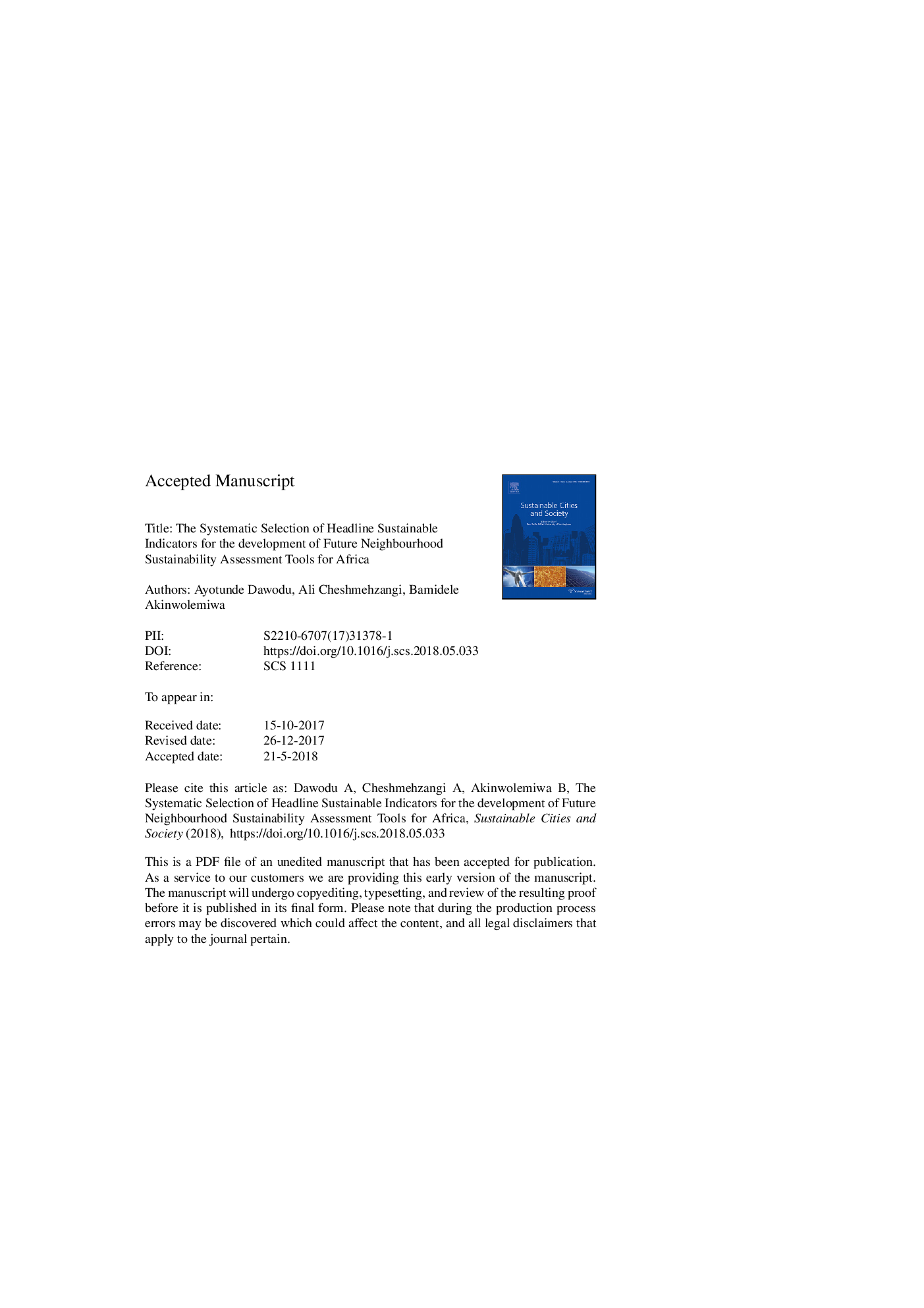| کد مقاله | کد نشریه | سال انتشار | مقاله انگلیسی | نسخه تمام متن |
|---|---|---|---|---|
| 6775256 | 1432007 | 2018 | 51 صفحه PDF | دانلود رایگان |
عنوان انگلیسی مقاله ISI
The systematic selection of headline sustainable indicators for the development of future neighbourhood sustainability assessment tools for Africa
ترجمه فارسی عنوان
انتخاب سیستماتیک شاخص های پایدار ریاضی برای توسعه ابزارهای ارزیابی پایداری در آینده برای آفریقا
دانلود مقاله + سفارش ترجمه
دانلود مقاله ISI انگلیسی
رایگان برای ایرانیان
کلمات کلیدی
شاخص توسعه پایدار، شاخص رشد پایدار، ابزار ارزیابی پایداری محله، آفریقا، پوشش ابعاد،
موضوعات مرتبط
مهندسی و علوم پایه
مهندسی انرژی
انرژی های تجدید پذیر، توسعه پایدار و محیط زیست
چکیده انگلیسی
The Neighbourhood Sustainability Assessment Tool (NSAT) is part of a growing number of strategic tools used in the bid to achieve a sustainable society. Unfortunately, the development of this tool in several countries has been plagued with pitfalls, such as: a lack of transparency in the development process and selection of Headline Sustainability Indicators (HSI), debatable adoption of sustainability pathways, and difficulties in determining a common set and standard number of urban HSI for assessment tools. It should be highlighted that HSI is the grouping of a specific urban issue and/or sustainable indicator(s) under a broad category that best describes the focus of that issue. This study aims to develop a coherent and transparent methodology, which can be used in developing a common set of HSI for NSATs. The motivation of this study stems from the fact that there are currently no NSATs developed for African countries, moreover, developing new sets of HSI in the African context would be both expensive and time consuming. Thus, by investigating the properties of already developed tools, the effectiveness of the HSI selection process for African cities are optimized. The result, which is the methodological process, emphasises four steps in the selection of HSI: (1) consider as many NSATs as possible. (2) Identify the motivation for the study and select a sustainability outlook. In the method developed herein four dimensions of sustainability is chosen, and this includes the institutional dimension which serves as a means of addressing the short comings of the institutional setup in Africa. (3) Allocate sustainability dimensions to all HSI and subsequently merge similar HSI. (4) Use the interrelationships between the dimensions of HSI to select a common set of HSI. In addition to being a foundational research, this study can also serve as a timely inducement to academics, professionals and government parastatals in Africa to commence rigorous investigations on the pathways to developing NSATs suitable for, and implementable in, the African context.
ناشر
Database: Elsevier - ScienceDirect (ساینس دایرکت)
Journal: Sustainable Cities and Society - Volume 41, August 2018, Pages 760-776
Journal: Sustainable Cities and Society - Volume 41, August 2018, Pages 760-776
نویسندگان
Ayotunde Dawodu, Ali Cheshmehzangi, Bamidele Akinwolemiwa,
